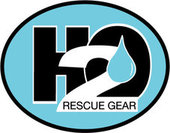Have you ever wondered what the pounds in bouyancy really mean? Boatsafe.com put together a quick and easy explanation which can be helpful.
What Does 'Pounds of Buoyancy' Mean?
Jeremy wants to know:
"In your course you say that different PFDs have different pounds of buoyancy. What does that mean?"
A buoyant apparatus is anything that can float and hold up weight. For instance, if you had a Type I PFD that is required to have 22 pounds of buoyancy, it would be capable of supporting 22 pounds of dense material such as lead, iron, gold, granite, etc. It would not let the material sink to the bottom. If we tied a 20 pound anchor to this PFD, what do you suppose would happen? If you guessed that it would hold the anchor off the bottom you would be correct.
How can this PFD with 22 pounds of buoyancy hold up a two hundred pound person in the water?You have to do the math! Let's take the example of a 200 pound person. Approximately 80% of the body is water. Water in the body has no weight in water. So now we are down to having to support only 40 pounds.
200 lbs. X 80% = 160 lbs.
200 lbs. - 160 lbs. = 40 lbs.
But the PFD only has a buoyancy rating of 22 lbs. How can it hold up 40 lbs?
On average our bodies also have 15% fat and fat is lighter than water.
200 lbs. X 15% = 30 lbs.
40 lbs. - 30 lbs. = 10 lbs.
Now you can see that the average 200 pound person only weighs about 10 pounds in water. The 22 lbs of buoyancy in your PFD is more than enough to keep the person afloat.
For more on this story please click this link - Boat Safety
